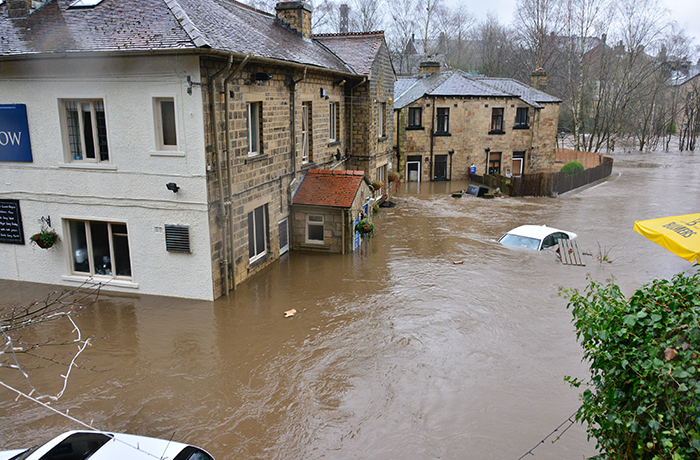The planning guidance on flood risk has been updated to strengthen local planning authorities’ ability to require better flood resilience in new developments. The revised guidance has emerged from the government’s review of policy for development in areas at flood risk published last year.
Planning applications in at-risk areas to be subject to greater scrutiny
Planning applications for new developments in at-risk areas in England, particularly larger housing developments, can expect a new level of scrutiny from planners.
In response to higher risks of flooding due to climate change, planners should now be satisfied that where development is determined to be necessary in flood risk areas - for example where alternative sites in lower risk areas are not available - the development will be safe from flooding for its lifetime, will not increase flood risk elsewhere and, where possible, should reduce flood risk overall.
Tensions between flood risk mitigation measures and other planning matters do not justify unsafe development, the updated planning guidance states. Planners get new guidance on when and how sequential and exception tests should be applied when assessing land as suitable for new housing.
There is also a new section on how to assess the suitability of developments where there is a possibility it will increase flood risk elsewhere. Where new homes are to be built in areas at risk of flooding, the planning guidance now states that homes should meet ‘recommended standards’ on flood resilience.
This will require architects to specify flood resilient building materials or use mitigation measures such as moving electric sockets higher up walls. The relevant standards are BS 85500:2015 on Flood resistant and resilient construction or the CIRIA Code of practice for property flood resilience.

Sustainable Urban Drainage Systems (SuDS) get a boost
Caroline Douglass, Executive Director for Flood and Coastal Risk Management at the Environment Agency, says the guidance provides advice to planners and developers that will encourage the use of more sustainable drainage systems.
This update will therefore provide a definite boost to the use of SuDS (Sustainable Urban Drainage Systems) by house builders and developers, which combine built and nature-based techniques to mimic natural drainage.
SuDS has been seized up upon recently by developers facing planning refusals due to the introduction of controversial ‘nutrient neutrality’ guidelines. These require planners in English authorities to prevent new dwellings from adding to wastewater run-off in scores of designated areas.
Where suitable land is available onsite or nearby, SuDS are being seen as the most practical short term response to nutrient neutrality guidance that is estimated to be blocking 120,000 new homes around the country.
The updated planning guidance does provide clearer requirements for information on SuDS that must be submitted with planning applications and encourages local planners to steer the type of SuDS they want to see in different locations.
To be considered SuDS, drainage systems must meet the ‘four pillars’ of water quantity, water quality, biodiversity, and amenity.
Text by Neal Morris. This is a Professional Feature edited by the RIBA Practice team. Send us your feedback and ideas.
RIBA Core Curriculum topic: Places, planning and communities.
As part of the flexible RIBA CPD programme, professional features count as microlearning. See further information on the updated RIBA CPD core curriculum and on fulfilling your CPD requirements as a RIBA Chartered Member.









